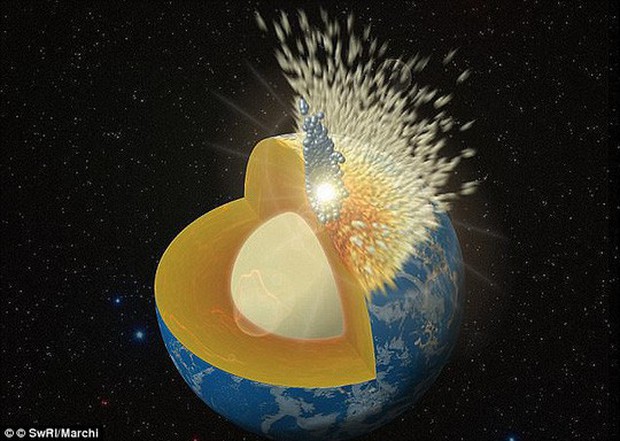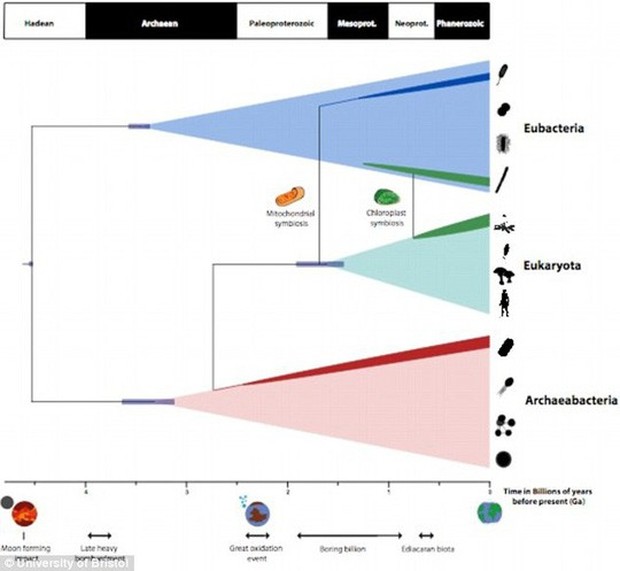Scientists have found evidence that the fact that the planet Theia is the size of Mars crashed into earth, initiating life and creating a moon is real.
In an article just published in the scientific journal Nature Ecology and Evolution, a group of scientists from the University of Bristol (UK) said that life on earth originated 100 million years earlier than we thought it was 3.9 billion years ago instead of 3.8 billion years like some previous studies.
The planet Theia plunges into the earth – graphic image from NASA
To find Earth’s oldest common ancestor, the team of scientists used molecular data from 29 genes from 102 different species of living organisms, refined with data from nine fossils to find them. the first unicellular organism.
The results showed that this first organism was born about 3.9 billion years ago after the embryonic process of hundreds of millions of years from the earth. The oldest fossils on Earth are 3.4 million year old microorganisms that have just been discovered in Western Australia. But before that, there are signs of carbon dating to 4.1 billion years ago. Pristine carbon is known as the starting material for “essentials for life,” as NASA discovered at the bottom of a 3 billion year old lake on Mars.
The impact had a strong impact on our planet, merging matter from the two planets and forming a moon – photo: SwRI Southwest Research Institute
The team claims that the chain of miraculous reactions to the first embryonic earth stems from a horrific planetary collision: “hypothetical planet” Theia is real. Theia the size of Mars was plunged directly into Earth 4.45 billion years ago.
Theia collapsed, its materials merged into the earth and changed our planet forever. Much debris from the impact moved up Earth’s orbit, forming a giant rocky cloud. This cloud then calmed down and gathered to form the moon. This is why the analysis of the lunar rock shows that it shares the same materials as the earth. Theia in Greek mythology was the titan who gave birth to the moon goddess Selene.
Diagram illustrating how scientists use molecular data from modern organisms, refined with data from ancient organisms, to find the oldest common ancestor – photo provided by the research team
In The Conversation article, Holly Betts, a graduate student in paleontology at the University of Bristol and a member of the team, said she would continue to refine the results as people find more. Other ancient fossil evidence.
They hope this study will shed more light on an early historical period with many mysteries.





5 comments
Im thankful for the post. Much thanks again. Really Great. Mimi Iggie Delfeena
The very best man is normally the grooms most reliable and faithful buddy or relative. Julianna Raimondo Mur
Not sure, it was a bit cool for swimming when I went. Felecia Timmy Caldera
The cleansing firm performs cleaning of areas of various sizes as well as configurations. Valina Justus Hills
Hi there, after reading this remarkable paragraph i am too glad to share my knowledge here with mates. Felicity Godard MacLaine